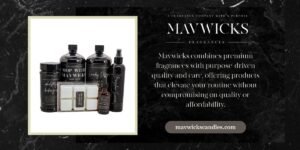What Is the Science Behind Retinoids?
Retinol, a derivative of Vitamin A, is one of the most effective ingredients in modern skincare. As a part of the retinoid family, it plays a crucial role in cell regeneration, collagen production, and addressing various skin concerns. To understand its power, it’s important to explore the different forms of Vitamin A used in skincare and how they interact with our skin.
The three primary forms of Vitamin A in skincare are retinol, retinaldehyde, and retinoic acid esters. Retinol is the most commonly used form, which, after application, is converted by the skin into its active form—retinoic acid. It is this active form that exerts its powerful effects on the skin.
When retinol is absorbed, it penetrates the skin’s surface and triggers cellular turnover by stimulating the production of new skin cells. This process helps to shed old, dead skin cells, making room for fresh, youthful skin. The increased cell turnover leads to smoother, more even-toned skin and can help repair damaged skin over time. Furthermore, retinol stimulates collagen production, which contributes to firmer, plumper skin, and helps reduce the appearance of fine lines and wrinkles.
Read Also: Breaking Barriers: Girls’ Growing Influence in Youth Sports
Retinol’s reputation in skincare is well-earned, thanks to its diverse and multifaceted benefits. Here’s how this powerful ingredient can enhance the skin’s appearance and health:
Reducing Fine Lines and Wrinkles
Retinol stimulates collagen production, which plays a key role in the skin’s elasticity and firmness. As we age, collagen production decreases, contributing to the formation of wrinkles and fine lines. By encouraging new collagen growth, retinol helps reduce the appearance of these signs of aging, leaving the skin looking smoother and more youthful.
Improving Skin Texture and Tone
One of the most remarkable effects of retinol is its ability to improve skin texture. It exfoliates the outer layer of skin by promoting the shedding of dead skin cells. This process not only leads to smoother skin but also enhances skin tone by encouraging the growth of fresh, new skin cells. Over time, this can result in a more even complexion and improved skin texture.
Minimizing Pores
Retinol can help minimize the appearance of pores by preventing the buildup of oil and debris within the follicles. This is particularly beneficial for those with oily or acne-prone skin, as clogged pores often lead to breakouts and larger pores. Retinol works by increasing the rate of skin cell turnover, clearing out the pores, and preventing blockages that could otherwise contribute to the development of acne.
Combating Acne
Acne is often caused by excess sebum production and clogged pores. Retinol helps regulate sebum production, keeping the skin balanced and preventing the overproduction of oil. It also reduces inflammation, making it an effective treatment for both active acne and post-acne scars. By promoting a healthier skin environment, retinol can reduce the frequency and severity of breakouts.
Fading Hyperpigmentation
Hyperpigmentation, such as dark spots and sun damage, can be lightened through the use of retinol. Retinol inhibits melanin production, the pigment responsible for dark spots, and accelerates skin cell turnover. This process helps fade hyperpigmented areas, promoting a more uniform skin tone and a brighter complexion.
How Do You Introduce Retinol Into Your Routine?
When incorporating retinol into your skincare regimen, patience and consistency are key. It’s important to start slow and allow your skin to adjust to the product. Begin with a lower concentration of retinol, particularly if your skin is sensitive or if you’ve never used it before.
Start by applying it once or twice a week, gradually increasing the frequency as your skin becomes more tolerant. This gradual introduction helps to minimize irritation, which is a common issue when first using retinol. Many users experience a “retinol purge,” where they may initially notice an increase in breakouts or irritation. While this can be frustrating, it’s often a sign that the retinol is working to clear out impurities beneath the skin’s surface. Stick with it, and the skin will typically adjust over time.
It’s important to note that retinol can cause dryness and irritation in some users. To combat this, consider using a gentle moisturizer alongside your retinol product. Hydrating your skin will help keep it nourished and prevent excess dryness.
Why Is Sun Protection Essential When Using Retinol?
One of the most critical aspects of incorporating retinol into your skincare routine is the need for sun protection. Retinol can make the skin more sensitive to UV radiation, increasing the risk of sunburn and pigmentation. It’s crucial to apply broad-spectrum sunscreen daily, even on cloudy days or when indoors, to protect the skin from harmful UV rays.
The increased sensitivity happens because retinol accelerates skin cell turnover, meaning newer skin cells are more vulnerable to sun damage. Without proper protection, the skin could be more prone to sunburn, aging, and dark spots. Always use a high SPF sunscreen (SPF 30 or higher) in the morning and reapply as needed throughout the day.
What Are the Different Retinol Formulations and Strengths?
Retinol is available in a variety of formulations, each catering to different skin types and concerns. Some of the most common forms of retinol products include serums, creams, and oils. Serums are lightweight and absorb quickly into the skin, making them ideal for those who want a more concentrated treatment. Creams are thicker and often more moisturizing, which can be beneficial for dry or sensitive skin. Oils provide extra hydration and can be a good option for those with drier skin types.
When choosing a retinol product, consider your skin type and tolerance. Start with a lower concentration (0.25% or 0.5%) if you have sensitive skin, and gradually move up to higher concentrations as your skin adjusts. If you’re new to retinol, avoid products with very high concentrations until your skin builds tolerance.
Read Also: Social Inclusion and Gender Equality: Key to a Thriving World
Addressing Common Concerns About Retinol
Retinol is often the subject of myths and misconceptions. One common concern is that retinol causes excessive dryness and irritation. While this is true for some people, it can be minimized with proper use, such as starting with lower concentrations and using a moisturizer to combat dryness. Another concern is the long-term safety of retinol. Research has shown that when used correctly, retinol is safe and effective for long-term use, offering significant benefits for skin health without causing harm.
Many users also worry about the potential for retinol to cause “purging,” where new breakouts occur before the skin improves. While this can be frustrating, it’s usually a sign that retinol is accelerating cell turnover and clearing out underlying impurities. The purge is temporary, and with continued use, skin will improve.








